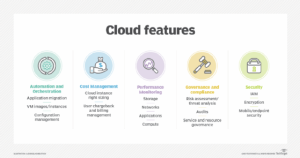
CI/CD, or Continuous Integration and Continuous Delivery, is a methodology that revolutionized software development. It emphasizes regular, automated code integration and delivery. When we talk about CI/CD in the cloud, we refer to implementing these principles in a cloud-based environment. This approach leverages the unlimited, on-demand resources available in the cloud, enabling teams to build, test, and deploy applications more efficiently and consistently.
The CI/CD pipeline is a series of steps that developers follow to deliver quality software more quickly. It starts with developers merging their code changes into a central repository, where automated builds and tests take place. The results of these tests provide immediate feedback to the team about the health of the application. If the build or tests fail, the team gets notified and can react promptly to fix the issues.
Once the application passes all tests, it moves onto the Continuous Delivery phase. Here, the new changes to the application are automatically prepared for a reliable release to production. This process significantly reduces the manual effort involved in deploying software, leading to more frequent and consistent updates.
Benefits of CI/CD in the Cloud
Reduced Infrastructure Overhead
Implementing CI/CD in the cloud offers significant benefits in terms of infrastructure overhead. Organizations no longer need to maintain and upgrade physical servers, storage, and network equipment to support their development and testing environments. Instead, they can leverage the infrastructure provided by the cloud service provider, which is maintained, upgraded, and secured by specialists.
Furthermore, the cloud allows for more efficient use of resources. Teams can spin up and tear down environments as needed, without having to worry about wasting resources when they are not in use. This level of flexibility is difficult to achieve with traditional, on-premise infrastructure.
In addition, cloud-based CI/CD pipelines can automatically scale to accommodate larger workloads. This scalability means teams can run multiple builds and tests concurrently, reducing the time it takes to deliver software updates.
Scalability and Flexibility
The scalability and flexibility of the cloud are also significant benefits for CI/CD implementation. In a cloud environment, resources can be quickly scaled up or down based on the workload, enabling teams to handle variable demand efficiently. This scalability ensures that the CI/CD pipeline always has the necessary resources to operate effectively, even during peak times.
The flexibility of the cloud is another major advantage. Teams can choose from a variety of tools and services to support their CI/CD pipelines, allowing them to customize their workflows to meet their specific needs. This flexibility extends to where and how the pipeline runs – teams can deploy their applications across multiple regions and environments, ensuring high availability and reliability.
Cost-Effectiveness
Implementing CI/CD in the cloud can also lead to significant cost savings. With cloud-based CI/CD, organizations only pay for the resources they use, rather than having to invest in expensive hardware and software upfront. This pay-as-you-go model can result in substantial savings, particularly for smaller organizations or projects with variable demand.
Moreover, the automation inherent in CI/CD pipelines reduces the need for manual intervention, leading to further cost savings. By automating build, testing, and deployment processes, teams can focus more on developing new features and less on routine tasks, leading to increased productivity and lower operational costs.
Enhanced Collaboration and Accessibility
Lastly, cloud-based CI/CD facilitates better collaboration and accessibility among team members. Since the CI/CD pipeline is hosted in the cloud, team members can access it from anywhere, at any time. This accessibility makes it easier for distributed teams to collaborate effectively, as they can all work on the same pipeline, regardless of their location.
Additionally, the transparency provided by the CI/CD pipeline fosters greater visibility into the development process. All team members can see the status of the pipeline at any time, enabling them to identify and address issues more quickly. This transparency also promotes a culture of shared responsibility, as everyone can see how their work affects the overall health of the application.
The Best Cloud Platforms for CI/CD
AWS
Amazon Web Services (AWS) is a leading provider of cloud services, offering a wide range of tools and services to support CI/CD. AWS CodePipeline is their continuous delivery service, which helps you automate your release process. AWS CodeBuild, CodeDeploy, and CodeStar are other notable services for building, deploying, and managing applications.
AWS offers extensive scalability, reliability, and security, making it an ideal choice for large-scale CI/CD implementations. It also integrates with many popular development tools, giving teams the flexibility to customize their CI/CD pipelines to their specific needs.
Microsoft Azure
Microsoft Azure is another popular choice for cloud-based CI/CD. Azure Pipelines is a cloud service that you can use to automatically build, test, and deploy your code. It supports a variety of languages, platforms, and tools, making it a flexible option for diverse teams.
Azure also offers strong integration with other Microsoft products, such as Visual Studio and Teams, which can streamline the development process for teams already using these tools. Moreover, Azure has a strong focus on security and compliance, providing numerous features to help protect your data and meet regulatory requirements.
Google Cloud Platform
Google Cloud Platform (GCP) is a robust cloud service provider with a strong offering for CI/CD. Google Cloud Build is their continuous integration and delivery platform, which lets you build and test applications in the cloud.
GCP stands out for its deep integration with Kubernetes, an open-source platform for managing containerized applications. If your team is using or planning to use Kubernetes, GCP could be an excellent choice for your CI/CD pipeline. Moreover, GCP offers competitive pricing and excellent documentation, making it a user-friendly option for teams of all sizes.
IBM Cloud
IBM Cloud is a comprehensive cloud platform with a strong focus on AI and machine learning. It offers a suite of tools for CI/CD, including IBM Cloud DevOps, which provides a complete set of capabilities for developing, testing, and deploying applications.
IBM Cloud stands out for its strong support for open-source technologies and its extensive range of services. It also offers strong security and compliance features, making it a good choice for businesses in regulated industries. Furthermore, IBM Cloud offers flexible pricing options, including a free tier, which can make it a cost-effective choice for smaller teams or projects.
Emerging Tools and Technologies in the Cloud CI/CD Space
Container-Native CI/CD Solutions
Containerization is a significant trend in the world of software development. Containers allow developers to package their applications and their dependencies into a single, self-contained unit, making it easier to manage, deploy, and scale applications. This has significant implications for CI/CD.
With container-native CI/CD solutions, developers can leverage the power of containers to streamline their CI/CD pipelines. For instance, they can use containers to create consistent testing environments, reducing the risk of issues arising due to inconsistencies between the development and production environments. Additionally, containers make it easier to manage and deploy applications, simplifying the delivery process.
Moreover, container-native CI/CD solutions also offer scalability benefits. Containers can be easily scaled up or down depending on the workload, making it easier to manage the resources used by the CI/CD pipeline. This can help teams to optimize their use of resources, reducing costs and improving efficiency.
Serverless CI/CD Services
Serverless computing is another emerging trend in the cloud CI/CD space. With serverless computing, developers can run their applications without having to manage the underlying infrastructure. This has significant implications for CI/CD.
Serverless CI/CD services allow developers to automate their CI/CD pipelines without having to manage the underlying servers. This can significantly streamline the CI/CD process, reducing the time and effort required to manage the pipeline.
Moreover, serverless CI/CD services also offer scalability benefits. With serverless computing, the underlying infrastructure can be automatically scaled up or down depending on the workload. This means that the CI/CD pipeline can be scaled to accommodate large workloads when necessary, and scaled down when the workload is lower, optimizing resource usage and reducing costs.
AI and Machine Learning-Enhanced Tools
AI and machine learning are transforming many aspects of our lives, and the realm of CI/CD is no exception. These technologies have the potential to significantly streamline the software delivery process, enabling teams to deliver high-quality software more quickly and efficiently.
One way AI and machine learning are enhancing CI/CD is by automating routine tasks. For instance, machine learning algorithms can analyze historical data to predict potential issues that could arise during the integration and delivery process. This allows teams to proactively address these issues, reducing the risk of delays or failures in the CI/CD pipeline.
In addition to predictive analytics, AI and machine learning can also help to optimize the CI/CD pipeline. Machine learning algorithms can analyze the performance of various aspects of the pipeline, identifying bottlenecks and areas for improvement. This can help teams to streamline their processes, improving efficiency and reducing the time it takes to deliver software.
Low-Code/No-Code CI/CD Solutions
Finally, low-code/no-code solutions are also emerging in the cloud CI/CD space. These solutions allow developers to automate their CI/CD pipelines using visual interfaces and pre-built components, rather than writing code.
Low-code/no-code CI/CD solutions can significantly streamline the CI/CD process. By automating the pipeline using visual interfaces and pre-built components, developers can reduce the time and effort required to manage the CI/CD pipeline.
Moreover, low-code/no-code solutions can also make CI/CD more accessible. By reducing the amount of code required to automate the pipeline, these solutions can make it easier for non-technical team members to contribute to the CI/CD process, democratizing the software delivery process.
In conclusion, the world of CI/CD in the cloud is changing rapidly, with a host of new tools and technologies emerging. By harnessing the power of AI and machine learning, containerization, serverless computing, and low-code/no-code solutions, developers can streamline their CI/CD pipelines, delivering high-quality software more quickly and efficiently. As these technologies continue to evolve, we can expect to see further innovations in the cloud CI/CD space, transforming the way we develop, test, and deliver software.
By Gilad David Maayan


